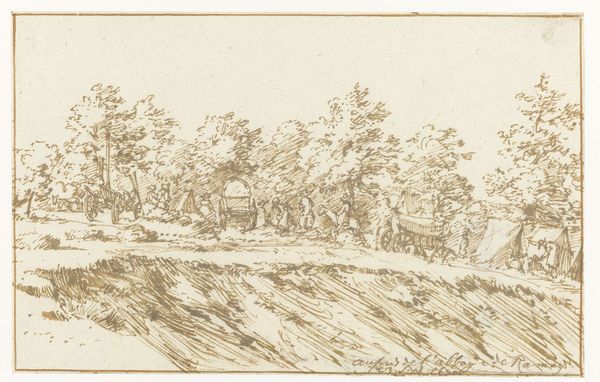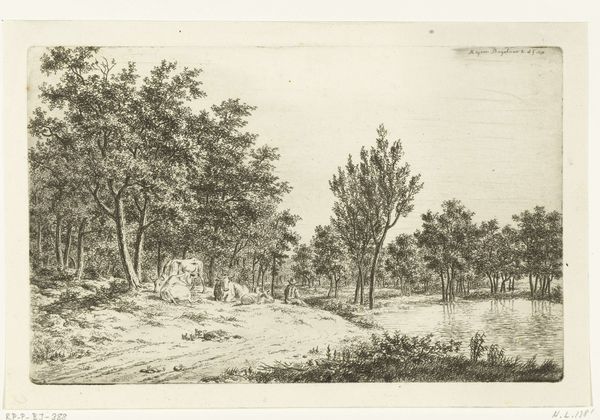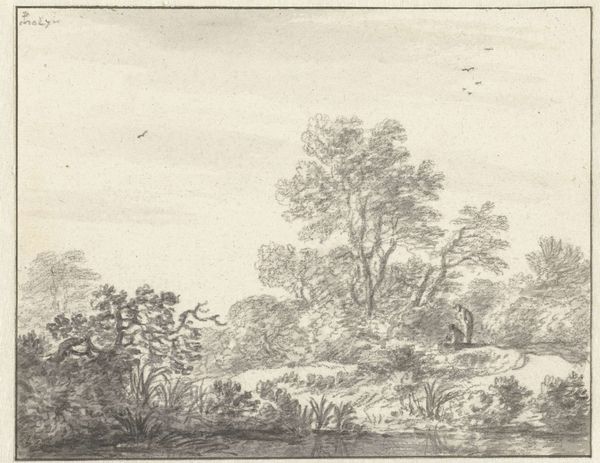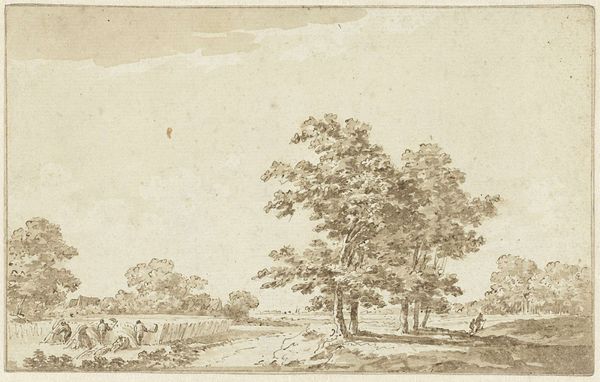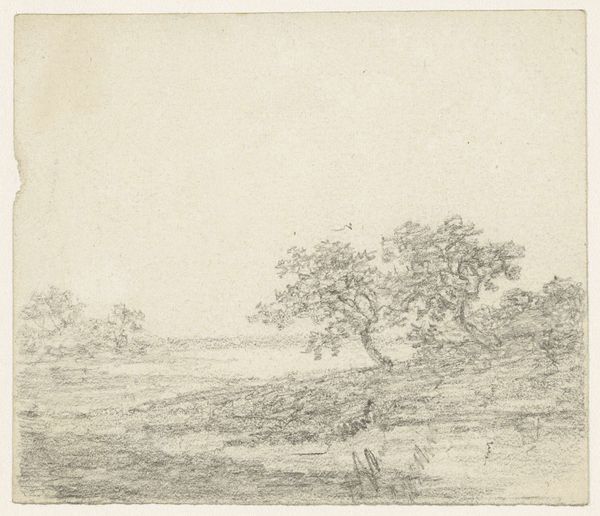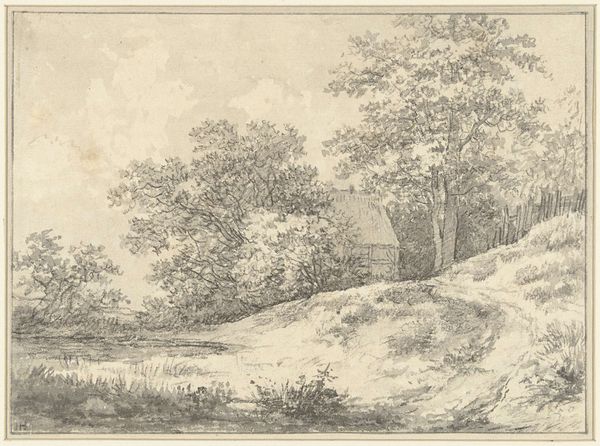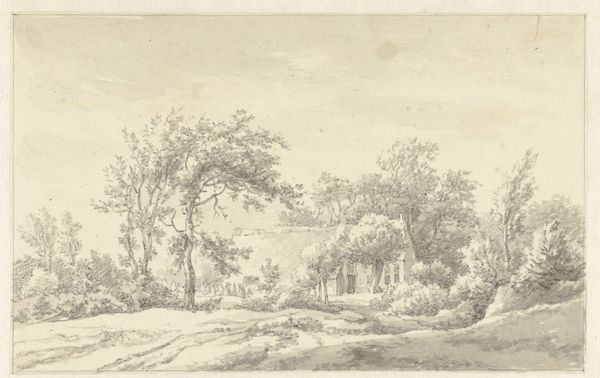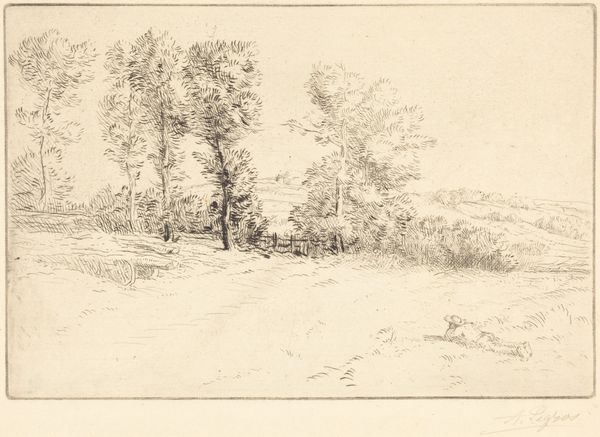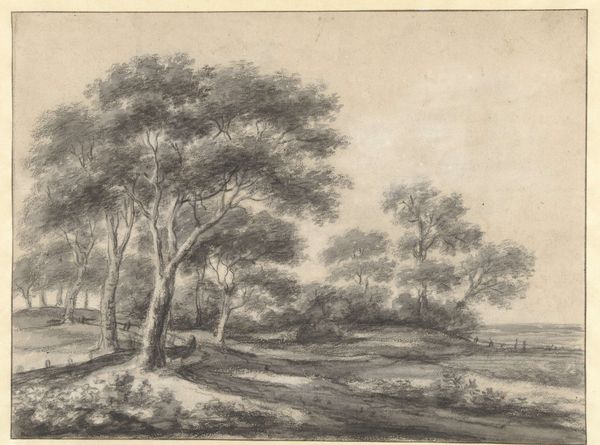
drawing, plein-air, ink, pencil
#
drawing
#
pen drawing
#
dutch-golden-age
#
plein-air
#
pencil sketch
#
landscape
#
ink
#
ink drawing experimentation
#
pencil
#
realism
Dimensions: height 204 mm, width 321 mm
Copyright: Rijks Museum: Open Domain
Editor: We're looking at "A Path along Sand Hills and Trees," a drawing by Adriaen van de Velde from the mid-17th century. It's rendered in pen, pencil, and ink and captures a very quiet, almost somber landscape. I'm really interested in the contrast between the detailed trees in the foreground and the almost blurry background. How would you approach analyzing this piece? Curator: From a materialist perspective, I see a focus on the very act of seeing and recording. Van de Velde's choice of pencil and ink suggests an economy of means, perhaps dictated by accessibility. "Plein-air" suggests portability and perhaps even a commercial motive. Was he creating sketches to sell, or for his own study? How does the drawing itself embody the labor involved in its creation? The use of readily available materials emphasizes a direct, unmediated engagement with the landscape. Editor: That's fascinating, the idea of it being directly related to labor and accessibility of materials. So, how would you connect that to the social context of the Dutch Golden Age? Curator: Think about the rising merchant class in the Dutch Golden Age and their burgeoning interest in land ownership. These small landscapes become objects of desire, easily traded and consumed. Furthermore, consider how this particular "path" becomes a symbol. Who travels this path, what does it mean in the wider discussion of dutch trade at the time? Is this commentary on leisure, or an illustration of class divide? Editor: So it’s less about the artistry, and more about what the materials and process tell us about the time? Curator: Not only the time, but class dynamics and the very concept of artmaking as work. Van de Velde wasn't just depicting a pretty scene; he was participating in a larger economic and social network. The drawing embodies that participation through its very materiality. Editor: This has completely changed how I see this drawing. Thank you. Now I'm looking at this in a very different way! Curator: Likewise. Seeing art through the lens of materiality always adds so many layers.
Comments
rijksmuseum about 2 years ago
⋮
An everyday landscape: an unpaved road with cart tracks winding along some sand hills before a row of trees with the occasional rooftop peeking through them. Van de Velde certainly did not invent this, but saw it with his own eyes and drew it on the spot. Exactly where, however, is unknown; perhaps in the dunes along the Dutch coast, or in the Gooi region.
Join the conversation
Join millions of artists and users on Artera today and experience the ultimate creative platform.
